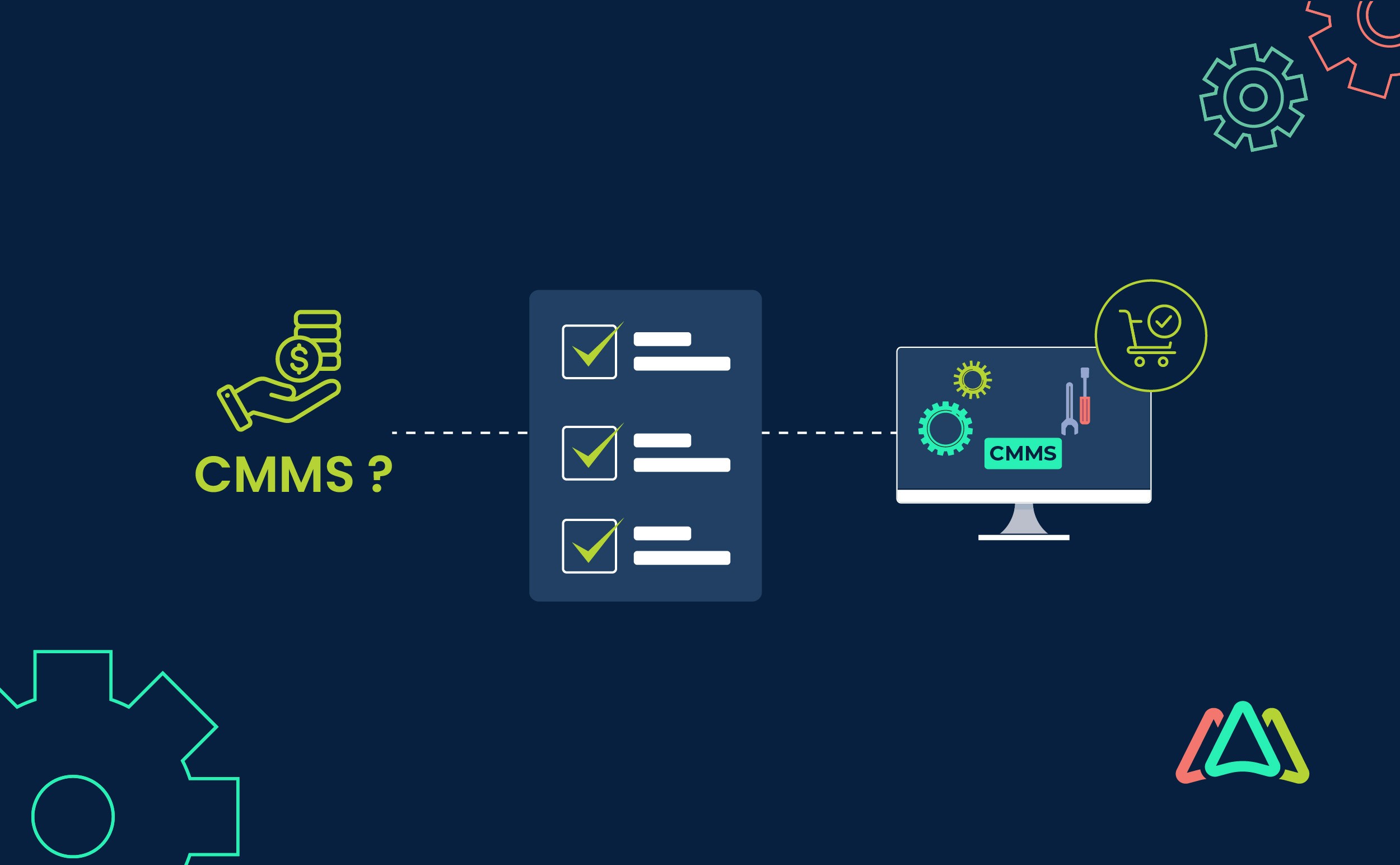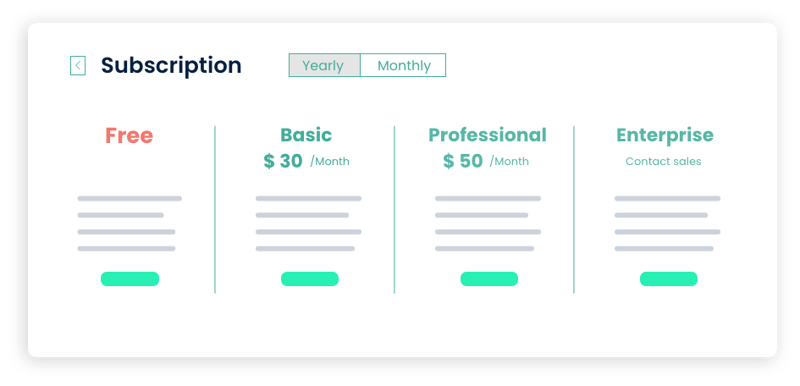
How to Choose the Right CMMS Software that Works with Your Budget?
In today’s fast-paced business environment, effective maintenance management is crucial for minimizing downtime and maximizing productivity. A Computerized Maintenance Management System (CMMS) can streamline your maintenance operations, ensuring that assets are maintained efficiently and effectively.
If a Computerized Maintenance Management Software (CMMS) is on your radar, you already know the marketplace offers plenty to choose from. At first glance, it may appear overwhelming, with so many vendors. G2 Crowd, a popular website for evaluating B2B software, has over 300 software options under its CMMS category. Capterra, another website that helps businesses evaluate different software before purchasing, has over 400 product listings under its CMMS category. Adding to the complexity, vendors offer various price plans (starter, mid-tier, and enterprise) with different onboarding options and, in a few cases, different deployment options (on-prem vs. web-based).
The challenge for buyers is to make sense of what is out there, understand the various offerings and hidden costs, and select the best solution for their business without paying unnecessary fees.
This guide will walk you through the essential factors to consider in your selection process.
What is CMMS?
A Computerized Maintenance Management System (CMMS) is software designed to simplify maintenance management tasks. It helps organizations track maintenance activities, manage work orders, schedule preventive maintenance, and maintain an inventory of spare parts. By automating these processes, a CMMS can lead to reduced downtime, improved asset lifespan, and increased operational efficiency.
Benefits of Using CMMS
Implementing a CMMS offers numerous advantages:
-
Increased Efficiency - Automate routine tasks and streamline workflows.
-
Cost Savings - Reduce unplanned downtime and extend the lifespan of assets.
-
Improved Compliance - Ensure adherence to regulatory requirements through better tracking and documentation.
-
Data-Driven Decisions - Analyze maintenance data to identify trends and make informed decisions.
Key Features to Look For
When selecting a CMMS, consider the following essential features:
-
User-Friendly Interface: A simple, intuitive interface ensures that all team members can use the system effectively.
-
Mobile Access: Mobile capabilities allow technicians to access information on-the-go, improving response times.
-
Work Order Management: Efficiently create, assign, and track work orders to ensure timely completion.
-
Preventive Maintenance Scheduling: Automate maintenance schedules based on usage or time intervals to prevent equipment failures.
-
Inventory Management: Keep track of spare parts and supplies to avoid stockouts and overstock situations.
CMMS Selection - The Steps
Choosing the right CMMS software for your organization is crucial for effective maintenance and asset management. The following are important criteria and steps to consider that will help you make the most appropriate CMMS selection and ensure your selection works within your budget:
1. Define Your Requirements
Start by identifying your organization’s specific needs. Consider the features your operations need. Standard CMMS features include work order management, preventive maintenance scheduling, asset tracking, inventory management, and reporting. Also, consider the size of your organization, the number of assets, your technician workforce, and the complexity of your maintenance processes.

2. User Counts and Roles
Most CMMS products today are subscription-based and charge per user. This model makes the most sense as your maintenance team's size often reflects the maintenance operation's size (but not always). Most CMMS providers consider users to be anyone who needs access to the application to submit and modify work orders, which translates to administrators and technicians assigned to work orders. Requesters (people who submit maintenance requests and are not part of the maintenance team) are excluded from paid users. Most CMMS providers agree that requesters are not paid for based on volume. However, unlimited requesters are sometimes only available at higher-priced subscription tiers. Some CMMS providers also offer different pricing based on the level of access technicians require. For organizations that don’t want to provide technicians the ability to update work orders and only want to track who work orders are assigned to, some CMMS vendors offer technician licenses at lower cost. Technician licenses limited to assigning work orders can be a cost saver for large teams. But it can also be a bottleneck for improving efficiency by requiring a manager to update and log all activities to work orders.
Typical user roles are administrators with full access and the ability to assign work orders and update and edit objects within the application. Technicians are users who are assigned to work orders and whose labor is tracked. And finally, requesters are limited to submitting maintenance requests that go through an approval process before becoming a work order. This is usually done through a simplified request form.
Learn more about CMMS User Roles and Permissions
3. Budget Considerations
Develop a realistic budget for the CMMS software. Consider the upfront costs and ongoing expenses such as maintenance, support, and potential upgrades. Look for software that offers a scalable pricing model that allows you to start with essential features and add more as your needs grow over time. It’s recommended that the final budget for a CMMS should be set after reviewing and evaluating a few products. After reviewing different products, you will have a clear understanding of all costs involved and the value they deliver. If you must determine a budget before thoroughly reviewing different products, getting quick numbers from 5 products is pretty straightforward. Most have pricing posted on their websites. Training and implementation costs may not be so easy to get from websites. It’s always best to contact the vendor to get these costs.

4. Software Demos and Trials
An essential part of the evaluation process is a software demo. With applications like Zoom, Microsoft Teams, and Google Meets, remote software demos are very easy. Gone are the days where businesses require vendors to come on-site for demonstrations. If this is a requirement for your business, you would limit your options to vendors willing to do this. It’s extremely easy to book a software demo with most CMMS providers. Just go to their website and fill out a form requesting a demo, and you are likely to have one booked within 24 hours of submission. It is recommended that you demo at least 2 CMMS products.
Most CMMS providers will offer free trials. Signing up for a trial is a great way to test the software and get a feel for its capabilities and ease of use. Getting a trial after the first demo and then returning to the provider with some questions regarding its functionality is recommended.
Before committing, demos and trials allow you to test the software's functionality and assess its compatibility with your organization's needs.

5. User-Friendly Interface
Choose a CMMS with an intuitive and user-friendly interface to encourage user adoption. This is crucial for successful implementation and consistent use. When doing a software demo or using a trial, pay attention to how easy it is to submit a maintenance request, assign a work order, update work orders, and add assets and parts. You are on the right track if these activities can be done easily. If it is overly complex to perform these activities, then it is best to consider other options. If users do not adopt the software, getting the return on investment you seek will be almost impossible.
Creating Work Orders using Click Maint is EASY AS 1 - 2 - 3!
6. Scalability
Further to an earlier point, ensure the CMMS can scale with your organization's growth. This means that it will be able to function reliably as the size and function of your operations increase. Specifically, the software should accommodate increasing assets, users, and maintenance processes without significant disruptions.
7. Mobile Accessibility
Inquire about CMMS with mobile accessibility. Today, almost everyone has access to and knows how to use mobile devices. Most CMMS mobile apps are easy to use and are included in subscriptions. Going mobile is essential for eliminating any paper trail and reducing the time to complete work. Mobile apps enable technicians to receive work orders, update maintenance activities, and access asset information in the field. It’s important to note that most CMMS providers do not provide mobile devices. However, most mobile apps work on iOS and Android. Windows is not widely supported by most CMMS, so make sure you qualify which mobile operating system they support before purchasing devices.
8. Cloud-Based vs. On-Premise
An important consideration is determining whether a cloud-based or on-premise solution suits your organization. Cloud-based solutions often have lower upfront costs, are easier to implement, and offer automatic updates. On-premise solutions may be preferred for organizations with specific security or compliance requirements.
9. Vendor Reputation
Research and assess the reputation of the CMMS software vendors. Look for customer reviews, testimonials, and case studies to gauge the satisfaction of existing users. There are plenty of websites with CMMS user reviews buyers can refer to. These include Capterra, Software Advice, G2 Crowd, Software Connect, and Finances Online .
10. Customer Support
Inquire about the support offered by the vendor. Check the availability and format of customer support, response times, and the cost of ongoing support. It should be expected that customer support is included with any cloud-based subscription. In many cases, however, you will find that the lowest-cost subscription plan comes with a lower level of support. With some CMMS, the mid and enterprise tiers come with a dedicated customer success manager who will be your support line through your subscription and be responsive to support requests. At the same time, the lowest-costing plans leave you with online digital resources (knowledge base, videos, and bot chat). You get what you pay for. For businesses that require responsive, personalized support, opt for a plan that supports this.
11. Security
Ensure that the CMMS you consider complies with relevant industry regulations and standards. Assess the security features to protect sensitive maintenance and asset data. In the past, companies that required high standards for security and compliance would not consider cloud-based software and only consider on-premise options. Times have changed, and cloud-based software accessed through a website is much more secure. If your business has high standards for security and compliance, ask vendors for their Consensus Assessments Initiative Questionnaire (CAIQ) document. This will provide your IT folks with a detailed rundown of the vendors' security policies to see if the vendor meets your standards. In addition, some vendors have been audited by independent 3rd parties to get SOC2 and ISO27001 certified. These certifications suggest the CMMS provider meets the highest standards when it comes to security.

12. Future Upgrades and Customization
Inquire about the vendor's commitment to ongoing software updates and improvements. Inquire about the timing of the upgrades and whether they will interfere with your organization’s operations. Consider whether the CMMS allows customization (and any associated costs) to adapt to changing business processes.
13. Integration Capabilities
Check if the CMMS can integrate with your organization's other systems, such as Enterprise Resource Planning (ERP) or accounting software. Single Sign-On (SSO), SAML, and Active Directory (AD) are other common integration considerations. Integration can streamline data flow and improve overall efficiency. Ensure that any CMMS provider you are considering has accessible API documentation you can connect to. Usually, SSO and API access is available at higher-priced enterprise subscription tiers. Even if integrating with other business applications is not an immediate priority, knowing this is an option for the future is important. If you are uncertain about integration requirements, ask your IT department for help.
Best Practices for Implementation
Once you've selected a CMMS solution, follow these best practices for successful implementation:
- Train Your Team: Ensure all users are adequately trained on how to use the system effectively.
- Migrate Data Carefully: Plan for a smooth transition by organizing existing data before migration.
- Monitor Performance: Regularly assess the system’s performance and gather user feedback for continuous improvement.
Click Maint’s CMMS Solution
Click Maint offers a powerful, easy-to-use, and affordable solution. Our founders have over 40 years of combined experience in the tech industry, specifically with CMMS. Over this time, the barriers associated with successful CMMS implementation were clear: high upfront costs, low user adoption, data migration, implementation challenges, and those associated with integration with other business applications.
To overcome these problems, Click Maint delivers a CMMS that’s extremely easy to use and implement. We also offer affordable pricing for user subscription fees and onboarding and implementation. We offer flexible pricing, where buyers can opt into monthly or annual. Finally, our customer support is second to none. With this, a manufacturing company reduced equipment downtime by 30% after implementing a preventive maintenance schedule using ClickMaint.
CMMS - A buyers market
There are plenty of CMMS options available. This is a significant advantage for buyers as they can review the available solutions and select a CMMS that best fits their business needs. On the downside, so many options can make deciding more complicated. At the end of the day, having more options is a good problem, and in today’s CMMS space, providers are forced to get more competitive in the pricing and services they offer. To ensure you get the best value for your investment, it’s essential to understand your business requirements and contact a few CMMS providers for demos. A decade ago, a demo usually required an on-site visit by the provider, but today, demos can be scheduled within 24 hours of contacting a vendor through their website. The CMMS market is very competitive, so providers are naturally inclined to deliver the best products and services to buyers. Leverage your account executive to provide all the information you need on subscription plans, implementation and training services, post-purchase customer support, renewal terms, and security. Also, get a trial after a demo to test it out.
TABLE OF CONTENTS
Keep Reading
Spare parts management within maintenance can make the difference between a problem-free ...
16 Dec 2025
Every maintenance team eventually faces the same question: When should we repair, and when ...
12 Dec 2025
Enterprise Asset Management (EAM) software has become a cornerstone for organizations aiming ...
12 Dec 2025
Unexpected equipment breakdowns can disrupt operations, increase repair costs, and reduce ...
11 Dec 2025
Businesses are always looking for ways to improve efficiencies, reduce costs, and improve ...
9 Dec 2025
The longest U.S. federal government shutdown to date lasted 43 days, beginning on October 1, ...
5 Dec 2025
Every maintenance professional faces it sooner or later — that critical time when an aging ...
18 Nov 2025
The term 'best' is often used loosely, without a clear understanding of its context or ...
14 Nov 2025
In the not too distant past, maintenance strategies have been defined by reaction—fixing ...
13 Nov 2025
Tax season is the time of year that often sends a ripple of anxiety through many of us. The ...
11 Nov 2025
Selecting a Computerized Maintenance Management System (CMMS) can, at first glance, be an ...
4 Nov 2025
In healthcare facilities, equipment uptime involves more than achieving operational ...
31 Oct 2025
Companies are subject to economic ups and downs, also known as economic volatility. Today, ...
30 Oct 2025
Maintenance challenges are a constant struggle, with unplanned downtime costing manufacturers ...
27 Oct 2025
Last winter, a maintenance technician at a U.S. paper mill ignored a predictive alert that ...
10 Oct 2025
Many organizations proudly say they “have a CMMS,” but ownership alone doesn’t equal ...
9 Oct 2025
Every maintenance team is under pressure to do more with less. Unplanned downtime is often ...
7 Oct 2025
The implementation of simple, yet powerfully effective, checklists has repeatedly ...
3 Oct 2025
In manufacturing, every second counts. When production stops, whether due to scheduled ...
2 Oct 2025
The increasing cost of maintenance, lack of accountability, and siloed systems leave many ...
30 Sep 2025







